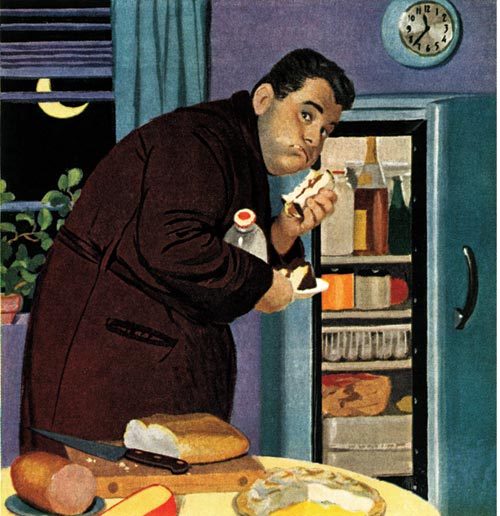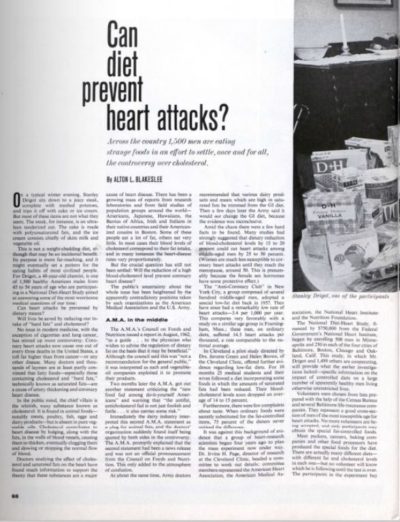Your Health Checkup: Creating a “Neighborhood Watch” for Your Heart
“Your Health Checkup” is our online column by Dr. Douglas Zipes, an internationally acclaimed cardiologist, professor, author, inventor, and authority on pacing and electrophysiology. Dr. Zipes is also a contributor to The Saturday Evening Post print magazine. Subscribe to receive thoughtful articles, new fiction, health and wellness advice, and gems from our archive.
Order Dr. Zipes’ new book, Bear’s Promise, and check out his website www.dougzipes.us.
Twenty years ago, when I was president of the American College of Cardiology, I wrote a president’s page commentary about the terrible toll inflicted by out of hospital cardiac arrest (OHCA), still responsible for almost 1,000 deaths daily in the U.S. I envisioned a Neighborhood Heart Watch Program I called Save A Victim Everywhere (SAVE) that would rely on citizen responders to be called and arrive first on the scene to administer lifesaving cardiopulmonary resuscitation (CPR) and/or apply a shock from an automated external defibrillator (AED). These are the two most important approaches to increase the appallingly low survival rate (5-8 percent) from OHCA in most places in the U.S. I also suggested that AEDs be made as available as fire extinguishers and be placed in readily accessible locations.
SAVE is based on the concept of a good-neighbor policy — similar to volunteer firemen and neighborhood watch programs — that could have a major impact on this scourge of modern civilization. I envisioned ordinary citizens trained to perform CPR and apply an AED and suggested that the number of such trainees could be increased if we taught such skills to high school students in public safety or health classes. When a cardiac distress call came into the 911 dispatch center, it would immediately be shunted to both the paramedics (EMS) and the nearest AED-equipped and -trained neighbor. This could increase the number as well as decrease the time-to-application of bystander applied AED shocks, the latter presently occurring in less than 10 percent of OHCAs. If necessary, drones could be used to deliver the AED to the OHCA site.
Such programs exist today in several places. For example, in Denmark, as noted in a recent publication, over a period of one year, citizen responders located about one mile from the OHCA victim were dispatched by cell phone to begin CPR or retrieve and apply an AED. Investigators noted that citizen responders arrived before EMS in 42 percent of 438 cardiac arrests, almost doubling the odds for bystander to begin CPR and more than tripling the odds for bystander application of a shock from the AED. They did not report clinical outcome.
Investigators in Germany compared outcomes for mobile rescuer-initiated CPR (94), EMS-initiated CPR (359), and lay bystander-initiated CPR (277) in 730 OHCAs. They found that mobile rescuers arrived in four minutes versus seven minutes for EMS. Outcome was also better for mobile rescuer responders with higher hospital discharge rate (18 percent) compared with EMS (7 percent). Better neurological outcomes were seen in 11 percent of mobile-rescuer patients compared with 4 percent of EMS patients (not statistically significant).
A recent review of community first responders found that such interventions resulted in increased rates of CPR or AED shocks performed before EMS arrival. However, the authors concluded that it remained uncertain whether this translated into significantly increased rates of overall patient survival and suggested that further study be performed.
Despite that cautious conclusion, since numerous studies have shown that time to first application of CPR and/or application of an AED shock are absolutely critical and that earlier application is associated with improved survival, it would seem to me that if such an outcome could be achieved with a good neighborhood heart watch policy, it would help save lives.
Citizen leaders interested in creating such a program should contact local authorities and, in collaboration with health care leaders, consider crafting SAVE for your neighborhood.
Featured image: Platoo Fotography / Shutterstock
Your Weekly Checkup: Learning from Nature to Reduce Cholesterol
“Your Weekly Checkup” is our online column by Dr. Douglas Zipes, an internationally acclaimed cardiologist, professor, author, inventor, and authority on pacing and electrophysiology. Dr. Zipes is also a contributor to The Saturday Evening Post print magazine. Subscribe to receive thoughtful articles, new fiction, health and wellness advice, and gems from our archive.
Order Dr. Zipes’ new book, Damn the Naysayers: A Doctor’s Memoir.
Nature has much to teach us if we are smart enough to listen.
For example, in 1928 an English doctor named Alexander Fleming returned to his messy hospital lab after a long vacation. He noted that a mold growing in the dish containing Staphylococcus bacteria had inhibited growth of the bacteria. The name of the mold? Penicillium. Louis Pasteur said, “Fortune favors the prepared mind.” Fleming’s mind was prepared and nature led him to the birth of antibiotics, revolutionizing the treatment of infections.
In modern times, statin drugs that reduce cholesterol, especially the “bad” LDL cholesterol, have revolutionized treatment of atherosclerosis, the fatty cholesterol build up in arteries that leads to heart attacks and strokes. But what if the cholesterol buildup is so great, it overpowers the statin effect? Are there other choices?
Yes, because nature opened another door likely to precipitate another revolution.
In 2005, a study found that a specific group of African Americans had very low cholesterol levels and virtually no heart disease. Researchers sought the reason and established that these people were born with a specific gene that was underperforming and was responsible for their low cholesterol. Scientists set about creating a drug that could block that gene, to reproduce nature’s experiment.
They created a new medicine, evolocumab, that opposed the gene’s function. In a recent study of over 27,000 individuals with preexisting atherosclerotic cardiovascular disease, almost all of whom were already taking a statin, those treated with evolocumab had a major drop in cholesterol—particularly the bad LDL cholesterol—to low levels never seen before, with a significant reduction in heart attacks and strokes. The downside is that the medicine is expensive and must be administered by injection. Nevertheless, nature has opened the door to an approach potentially more powerful than statins in preventing heart attacks and strokes.
Your Weekly Checkup: Winter Can Be Harmful to Your Health
We are pleased to bring you “Your Weekly Checkup,” a regular online column by Dr. Douglas Zipes, an internationally acclaimed cardiologist, professor, author, inventor, and authority on pacing and electrophysiology. Dr. Zipes is also a contributor to The Saturday Evening Post print magazine. Subscribe to receive thoughtful articles, new fiction, health and wellness advice, and gems from our archive.
We’ve all read that dreaded headline: “Massive heart attack kills man while shoveling snow.” Is it true? Does winter increase the risks for having a heart attack, or could the sudden stress of physical activity in a couch potato be the cause? A recent study from Sweden of more than 280,000 patients suggests that cold air temperature can trigger a heart attack. The investigators found that the number of heart attacks per day was significantly higher during subzero Celsius temperatures compared to when it was warmer.
But winter brings many changes in addition to temperature. The hours of sunlight diminish, which can affect a variety of body functions including mood, body temperature, sleep/wake cycles, and secretion of hormones such as serum cortisol and melatonin. For example, seasonal affective disorder (SAD) is a well-established condition characterized by depression during the winter months, and is treated by exposing patients to a light therapy box emitting 10,000 lux of light each morning to simulate an earlier sunrise. Blood pressure is higher during the winter, as is cholesterol, upper respiratory infections, and the flu. Stroke mortality peaks in January, with a trough in September.
Interestingly, mortality is higher during the winter even in Los Angeles, where the winter temperatures remain mild. A study of over 220,000 deaths from Los Angeles County almost 20 years ago showed that the mean number of deaths was a third higher in December and January than between June and September. An increase in deaths peaked around the holiday season and then fell, raising the question of whether the stress of overeating or drinking during the holiday season, or perhaps sitting down to a turkey dinner with that disagreeable relative, might be a cause. Holiday hedonism is not the likely cause, because in Australia and New Zealand, the same winter influences on mortality occur during their winter months of June through August. In addition, sudden death also peaks in infants during the winter.
So, what can we conclude? Heart attacks, sudden death, and total mortality all increase during winter months, impacted by cold temperatures and other influences as well, such as shorter hours of daylight. My advice is to keep warm and continue your usual activities, diet, and medications. But be alert and check with your physician if you become aware of any new symptoms indicative of a change in health status. And stay happy! It’s good for your health!
Predictions: Can Diet Prevent Heart Attacks?
By the 1960s, research was already showing that the typical American diet increased the risk of heart attack. This article from the January 25, 1964, issue of the Post shared new studies about attempts to reduce the risk.

The great hope and challenge lie in the facts that any man can control the risks of heart attack by controlling his living habits. There is no guarantee that by reducing each risk he can escape or postpone a heart attack, but there is a mounting mass of evidence that he can build some protection. Controlling even one of these hazards should boost the chances for longer life. Control them all, and your heart, in a sense, gets nine lives.

This article is featured in the July/August 2017 issue of The Saturday Evening Post. Subscribe to the magazine for more art, inspiring stories, fiction, humor, and features from our archives.